 SAN FRANCISCO — In the sports world, the history of the United States women’s national team is the equivalent of a fairy tale. The team has completed seemingly impossible comebacks, maintained ridiculous winning streaks and featured moments of individual brilliance.
U.S. women's national team players, bottom from left, Christen Press, Yael Averbuch and Heather O'Reilly; top from left, Whitney Engen and Jillian Loyden.
SAN FRANCISCO — In the sports world, the history of the United States women’s national team is the equivalent of a fairy tale. The team has completed seemingly impossible comebacks, maintained ridiculous winning streaks and featured moments of individual brilliance.
U.S. women's national team players, bottom from left, Christen Press, Yael Averbuch and Heather O'Reilly; top from left, Whitney Engen and Jillian Loyden.
I am often starkly aware that I’m participating in something truly amazing, yet at times incredibly challenging and humbling. After all, the participants in this fairy tale are still human.
We Cry I have lost count of how many times this environment has seemingly broken me. There have been days when the stress and repetitive failure has overpowered my ability to enjoy playing and stripped my motivation. But in those times I am surrounded by some of my best friends and people who find ways to support me and hoist me back up when I can’t do it myself. If only I had a dollar for every time Whitney Engen has seen me break down and has provided a voice of reason. Or there’s Heather O’Reilly, who has encouraged me and made me feel valuable even when I couldn’t see my own value. A kind word or supportive comment at training from Carli Lloyd reminded me that I’m not crazy when I think that I can achieve what I’m after, but it feels like I’m fighting an uphill battle. There is no level of success that eradicates moments of doubt, disappointment and despair. But there are no people I’d rather be around in those moments than these.
We Laugh In the soccer world, there is no moment too serious not to find some humor. Whether it’s a Vine video that Sydney Leroux shows at dinner, Lauren Holiday (nee Cheney) making fun of her defensive abilities in a video session, or someone goofing around with Stephanie Cox’s baby daughter, the sound of laughter prevails in training camp. Although we often roll our eyes at his sense of humor, Coach Tom Sermanni likes to make light of things and even jokes with us about mistakes in training or games (which sometimes makes us cringe before we realize we are allowed to take a breath and relax). Laughter is about survival. It brings joy to an otherwise tense and stressful environment. There is nothing funny about this group’s goals and ambition, but we certainly don’t take ourselves too seriously.
We Love When you care so deeply about what you do, and fully invest in it, you leave yourself exposed. For this reason, many of us have formed extremely tight bonds with one another. We have seen each other play and develop over the years. We have witnessed one another’s ups and downs, seen each other get engaged, married and have children. We live together for weeks of intense training and talk about our hopes, fears, dreams and spiritual beliefs. For these reasons, we share a love that is like no other bond we will share in our lives. My teammates have seen me naked — in the figurative sense, not just in the shower — and accept me for who I am. And I love and respect them for that.
We Compete Competitive by nature is an understatement. This is the kind of environment where a player’s day is made or broken by a small-sided game in training; people slide during technical drills to try to make it work properly or save a stray pass; and card games in our spare time turn into fierce battles and weeklong arguments. Everyone here wants to be the best, and everyone is really good at what they do. What I’ve realized is the best way to compete in this environment is with myself. This is the hardest working, most talented group of women I think I will ever encounter. We each bring a set of qualities to the table that is unique, and we must mold it to fit within the framework of the team. My job, and all I can control, is to make my skill set as potent and effective as I possibly can. So while we scrap and fight to win in anything and everything possible, my real competition exists internally.
Those of us fortunate to don the U.S. crest are privy to an environment like no other. This group fosters greatness, but simultaneously maintains a tough and grueling blue-collar mentality. The success is composed of individual efforts, yet the feeling of cooperative momentum is overwhelming. Competing within the team is fierce, but fosters some of the closest bonds that life can offer. These paradoxes drive a level of success that is unparalleled in almost any field. At the end of the day, we play for our country, but we cry, laugh, love and compete for one another.

 GOTHENBURG, Sweden — I am often asked if I am like so many other Americans who think Europe is one big country and who do not bother to differentiate between its various nations and cities.
GOTHENBURG, Sweden — I am often asked if I am like so many other Americans who think Europe is one big country and who do not bother to differentiate between its various nations and cities.
 Photograph by Per MontiniThe writer playing for Gothenburg, which beat Malmo, 2-1, in a recent Swedish league game.
Photograph by Per MontiniThe writer playing for Gothenburg, which beat Malmo, 2-1, in a recent Swedish league game. Photograph by Gloria AverbuchIn Montclair, N.J., 8 years old or thereabouts.
Photograph by Gloria AverbuchIn Montclair, N.J., 8 years old or thereabouts.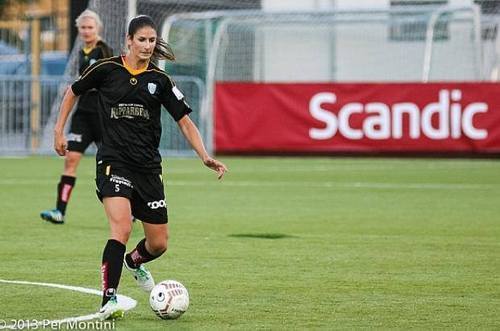
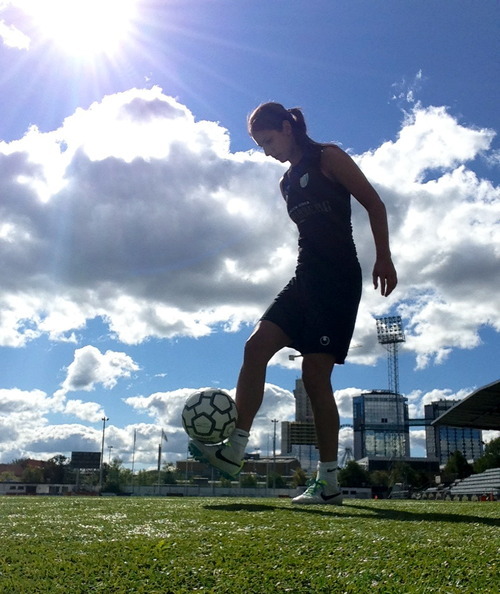
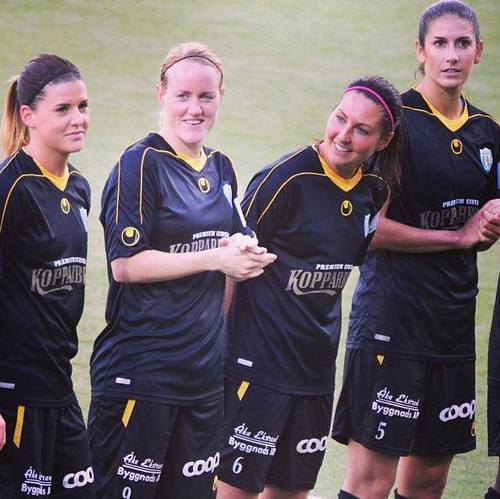

 The club bought purple bikes for the author and a teammate.
The club bought purple bikes for the author and a teammate.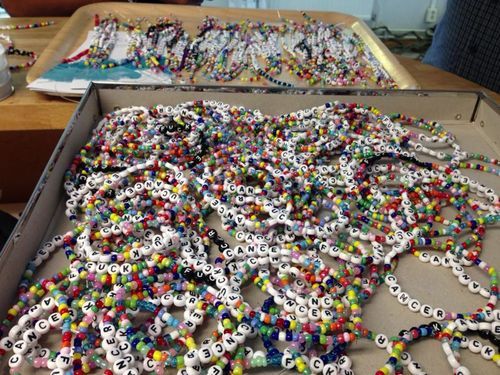
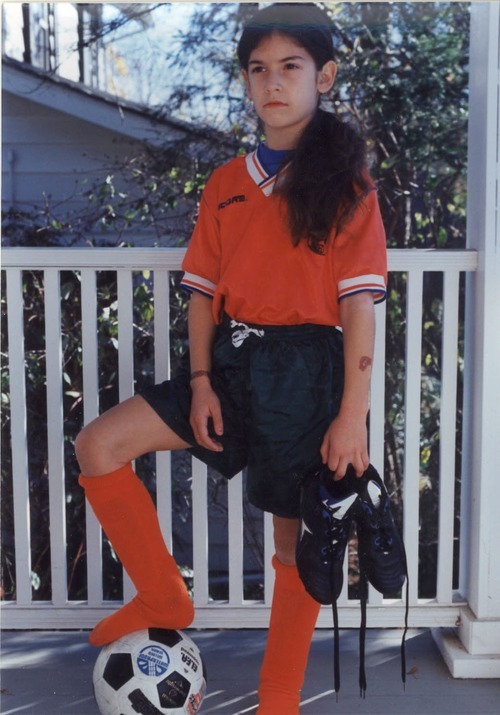
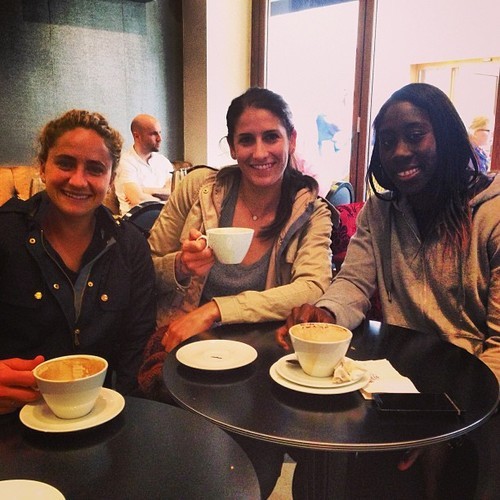

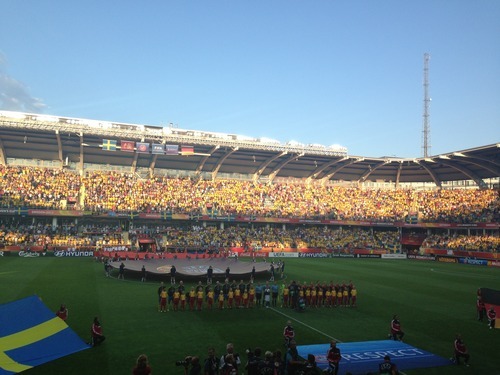

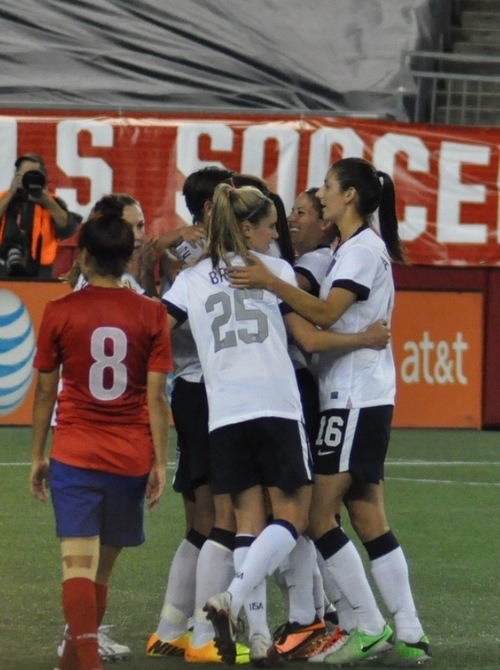 In the locker room we joked about Abby Wambach’s boots—a pair of flashy yellow NIKE Vapors. Tobin Heath even tried them on, looking ridiculous with the combination of the bright color and Abby’s much-bigger shoe size. Little did we know that those boots were about to make history by breaking Mia Hamm’s all-time international goal-scoring record. #ChasingMia became #ChasingAbby within 45 minutes of magical action in front of nearly 20,000 fans at Red Bull Arena.
In the locker room we joked about Abby Wambach’s boots—a pair of flashy yellow NIKE Vapors. Tobin Heath even tried them on, looking ridiculous with the combination of the bright color and Abby’s much-bigger shoe size. Little did we know that those boots were about to make history by breaking Mia Hamm’s all-time international goal-scoring record. #ChasingMia became #ChasingAbby within 45 minutes of magical action in front of nearly 20,000 fans at Red Bull Arena.
 “And after a time you may recognize that the proper measure of success is not how much you’ve closed the distance to some far-off goal but the quality of what you’ve done today.” — U.S. Supreme Court Justice Sonia Sotomayor
“And after a time you may recognize that the proper measure of success is not how much you’ve closed the distance to some far-off goal but the quality of what you’ve done today.” — U.S. Supreme Court Justice Sonia Sotomayor Photographs by Yael Averbuch
Photographs by Yael Averbuch


 As I lounged on the couch, all I could think was: If I don’t do my hamstring exercises, they will be sosore when I start back up. And my quads … they’re going to kill me after I do a shooting session.
As I lounged on the couch, all I could think was: If I don’t do my hamstring exercises, they will be sosore when I start back up. And my quads … they’re going to kill me after I do a shooting session.







 DEN HAAG, the Netherlands — The alarm always seems to go off much too early the morning after a game.
DEN HAAG, the Netherlands — The alarm always seems to go off much too early the morning after a game. F.C. RossiyankaGoalkeeper Elvira Todua, right, during Rossiyanka’s second-leg loss to Potsdam in the UEFA Women’s Champions League in Moscow on March 20.
F.C. RossiyankaGoalkeeper Elvira Todua, right, during Rossiyanka’s second-leg loss to Potsdam in the UEFA Women’s Champions League in Moscow on March 20.



